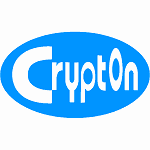Catch-up TV vs OTT,
or different manifestations of a single entity
The use of IP data transmission technology for the organization of linear (On-Line) digital television broadcasting or broadcasting on demand (On-Demand) of certain content has given rise to a number of ways to organize services for accessing television content both in the local networks of network operators and the global Internet network. The reason for this technological diversity, in our opinion, lies in the rapid development of IP technologies and the desire of a number of large corporations to seize leadership in a promising new multimedia market without waiting for a single industry-wide standard. The emergence of various terms, such as Shift TV, Catch-up TV, OTT TV, is rather associated not with any fundamental technological differences, but rather with the fact that companies, institutions, people involved in the same convergent process were involved. various business areas, namely television and the Internet.
Catch-up TV (timeshifted TV)
The term appeared in the television environment and is a logical development of Near VoD or Shift TV, used by a number of satellite and cable digital TV operators to add interactive qualities to their linear broadcasting. The first experience of IPTV broadcasting, using multicast, allowed significant savings on the bandwidth of IP networks, but did not differ much from conventional cable or satellite broadcasting. The use of TCP / IP transport and Http data access method made it possible to organize less demanding networks on equipment and truly interactive access to video data on the servers of network providers. At its core, Catch-up TV is a method of rebroadcasting television programs captured from the air, satellite or cable network and provided to the user on demand (On-Demand) or live (On-Line).
OTT TV (Over-the-Top)
OTT is a development of the file model of media content transfer, in which data is not downloaded but broadcast as digital video / audio streams. The development of this method is primarily associated with the so-called business model of content rental in On-Line cinemas. In the future, some OTT providers began to expand their services with access to television broadcasting like Catch-up.
Differences
Differences are optional or may be absent altogether depending on the specific implementation.
- Catch-up TV is used by local / regional multiservice converged network operators along with cable TV, Internet access services, IPTV, VoIP etc. OTT is used to sell content on national or global networks.
- Catch-up TV predominantly uses the TS data transmission model and is easily integrated into existing broadcast networks. OTT uses a file model and requires transcoding of incoming TV streams.
- OTT performs better (QoS) on low quality networks and mobile networks.
- Catch-up TV requires less startup investment. Easily scalable.
The Crypton solution — IPTV video server
The Crypton IPTV server has been designed for cable operators who are developing their businesses in a converged networking model. In addition to Internet access in new IP networks, it is possible to add both linear television and an extremely popular service in Western Europe and the USA following the broadcast (deferred viewing). Internet providers will also find in our solution the most convenient and cheapest way to provide their customers with interactive television services.
© 2023 Crypton Ltd. All rights reserved
